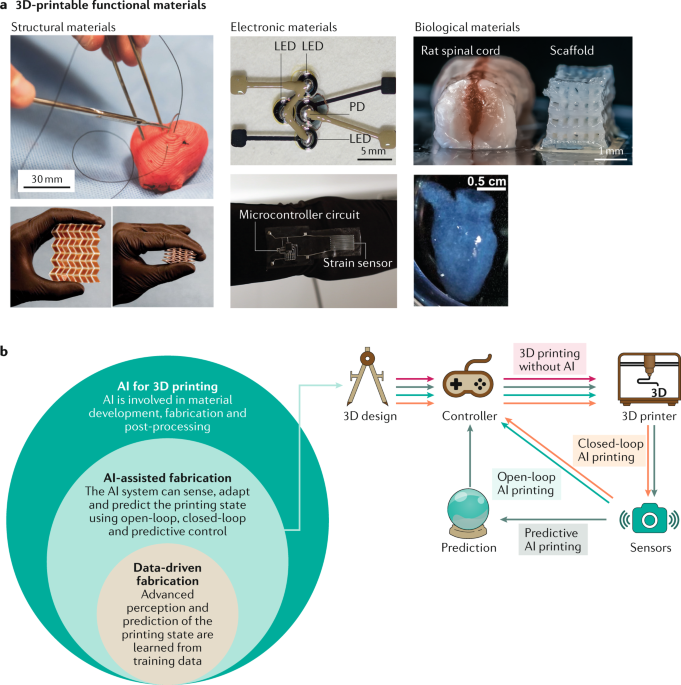3D printing has rapidly evolved from a niche technology to a mainstream manufacturing process. One of the key drivers of this growth is the availability of a wide range of materials that can be used for 3D printing. The ability to print in materials such as plastics, metals, ceramics, and even food has opened up a new world of possibilities for designers, engineers, and manufacturers. In this blog post, we’ll take a comprehensive look at the various materials that can be used for 3D printing.
Plastics
Plastics are one of the most commonly used materials for 3D printing. They are lightweight, durable, and easy to work with, making them ideal for a wide range of applications. Some of the most popular plastic materials used for 3D printing include ABS, PLA, PET, and Nylon.
ABS (Acrylonitrile Butadiene Styrene) is a thermoplastic polymer that is strong, flexible, and impact-resistant. It is commonly used in applications such as automotive parts, toys, and electronic housings.
PLA (Polylactic Acid) is a biodegradable thermoplastic that is made from renewable resources such as cornstarch or sugarcane. It is commonly used in applications such as food packaging, medical implants, and 3D printing filaments.
PET (Polyethylene Terephthalate) is a thermoplastic polymer that is commonly used in applications such as bottles, containers, and textiles. It is also widely used in 3D printing due to its high strength and durability.
Nylon is a thermoplastic material that is known for its strength and flexibility. It is commonly used in applications such as gears, bearings, and other mechanical parts.
Metals
Metals are also widely used in 3D printing, particularly in industrial applications. Metal 3D printing can produce parts with high strength and durability, making them ideal for applications such as aerospace, automotive, and medical devices. Some of the most commonly used metals for 3D printing include titanium, stainless steel, aluminum, and cobalt-chrome.
Titanium is a lightweight and strong metal that is commonly used in applications such as aerospace and medical implants. It is also used in 3D printing due to its biocompatibility and corrosion resistance.
Stainless Steel is a strong and durable metal that is commonly used in applications such as automotive parts and kitchen appliances. It is also widely used in 3D printing due to its strength and corrosion resistance.
Aluminum is a lightweight and strong metal that is commonly used in applications such as aerospace, automotive, and construction. It is also widely used in 3D printing due to its high strength-to-weight ratio.
Cobalt-Chrome is a strong and durable metal that is commonly used in medical implants, dental prosthetics, and aerospace applications. It is also widely used in 3D printing due to its biocompatibility and strength.
Ceramics
Ceramics are also used in 3D printing, particularly for applications that require high strength and heat resistance. Ceramic 3D printing can produce parts that are resistant to corrosion, wear, and high temperatures, making them ideal for applications such as aerospace, electronics, and biomedical devices. Some of the most commonly used ceramic
Properties of 3D Printing Materials
The properties of 3D printing materials vary depending on the type of material used. However, there are some general properties that are common among most 3D printing materials.
Strength and Durability: 3D printing materials can range from strong and durable to weak and fragile. Materials like metals and carbon fiber composites are known for their strength and durability, while materials like PLA and ABS are less strong and more prone to breakage.
Flexibility: Some 3D printing materials are more flexible than others. Flexible materials like TPU and TPE can be used to create objects with a lot of give, while more rigid materials like metal and glass are not flexible at all.
Heat Resistance: Different 3D printing materials have varying levels of heat resistance. Some materials, like nylon and polycarbonate, can withstand high temperatures, while others like PLA and ABS have low heat resistance.
Surface Finish: The surface finish of a 3D printed object can vary depending on the material used. Some materials produce a smooth, glossy finish, while others have a more matte or rough texture.
Conclusion
3D printing has opened up new possibilities for manufacturing, design, and production. With a wide range of materials available, it is possible to create complex and unique objects that were previously impossible with traditional manufacturing techniques. Whether you are a hobbyist, designer, or engineer, understanding the properties and characteristics of 3D printing materials is essential for creating successful prints.
As the technology continues to evolve, we can expect to see new materials with even more impressive properties and capabilities. From flexible electronics to bio-printed organs, the future of 3D printing is full of exciting possibilities.




